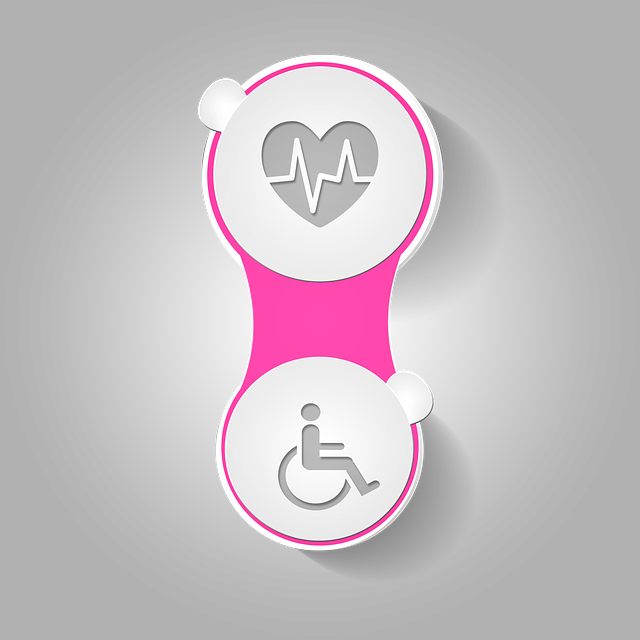Semaglutide, a GLP-1 receptor agonist, is a potent tool in type 2 diabetes management, offering improved glycemic control and weight loss. Prescribing this medication requires a meticulous approach, including a thorough evaluation of patient history, careful dose titration, and close monitoring for adverse effects. Key considerations involve meeting specific diagnostic criteria, managing drug interactions, assessing cardiovascular risks, and providing clear patient instructions. Regular follow-ups are essential to optimize dosing and address potential side effects, ensuring safe and effective semaglutide therapy for complex diabetic cases. Patient education on the requirements for semaglutide prescription enhances adherence and outcomes, making it a crucial strategy in diabetes management.
In this comprehensive guide, healthcare providers are empowered to navigate the prescribing landscape of Semaglutide, a groundbreaking Glucagon-Like Peptide-1 Receptor Agonist. We delve into the intricacies of understanding Semaglutide’s mechanism and its role in managing diabetes. This article clarifies eligibility criteria, offering practical dosing guidelines and underscoring critical safety considerations. Additionally, we explore common adverse events, monitoring strategies, interacting medications, and patient education techniques to ensure successful treatment with Semaglutide, adhering to essential requirements for prescription practices.
Understanding Semaglutide: A Glucagon-Like Peptide-1 Receptor Agonist

Semaglutide is a glucagon-like peptide-1 (GLP-1) receptor agonist, a class of medications designed to mimic the effects of the natural hormone GLP-1. This synthetic compound plays a significant role in managing type 2 diabetes by enhancing insulin secretion and suppressing glucagon release, leading to improved glycemic control. Its unique mechanism of action not only reduces blood sugar levels but also promotes weight loss, making it a versatile treatment option.
Healthcare providers prescribing semaglutide should be aware of the specific requirements and considerations. This includes an understanding of its indications, such as improving glycemic control in adults with type 2 diabetes, often in conjunction with diet and exercise. Prescribers must also monitor patients for adverse effects, like nausea, vomiting, or diarrhea, which are common but usually transient. Knowledge of the drug’s administration protocol is crucial—semaglutide is typically administered once weekly by subcutaneous injection—and providers should guide patients on proper injection techniques to ensure adherence and optimal outcomes.
Who Should Be Prescribed Semaglutide? Eligibility Criteria

Semaglutide, a glucagon-like peptide-1 (GLP-1) receptor agonist, is typically prescribed for individuals with type 2 diabetes who require additional control to manage their blood sugar levels. To be considered for semaglutide prescription, patients should meet specific criteria. These include having a diagnosis of type 2 diabetes mellitus, being on a stable diet and exercise regimen, and not requiring insulin therapy as a primary treatment method.
Eligibility also depends on current medications and patient history. Patients taking certain medications that affect glucose metabolism or with a significant risk of hypoglycemia might not be suitable candidates. Moreover, a thorough medical history review is essential to ensure no contraindications exist, such as severe kidney or liver disease, pancreatitis, or a personal or family history of medullary thyroid carcinoma.
Dosing and Administration Guidelines for Healthcare Providers

Prescribing semaglutide requires a thorough understanding of its dosing and administration guidelines. Healthcare providers should initiate treatment with a low dose and gradually increase it to the recommended maintenance dose, typically every week. The starting dose varies based on patient characteristics and other medications they are taking; it’s crucial to consult the product label for specific requirements.
After achieving stability at the weekly maintenance dose, providers must closely monitor patients for adverse reactions, particularly gastrointestinal issues and metabolic changes. Regular follow-ups ensure optimal dosing adjustments and address any concerns promptly. Understanding these guidelines is essential for effectively managing patients on semaglutide therapy and meeting their individual treatment needs.
Important Safety Considerations Before Prescribing Semaglutide

Before prescribing semaglutide, healthcare providers must carefully consider several safety aspects to ensure optimal patient outcomes and mitigate potential risks. Semaglutide, a glucagon-like peptide-1 (GLP-1) receptor agonist, is primarily indicated for the treatment of type 2 diabetes. However, its use involves unique considerations due to its mechanisms of action and associated side effects. One key requirement is a thorough evaluation of the patient’s medical history, including any renal or hepatic impairment, as these conditions may impact drug metabolism and elimination.
Additionally, healthcare providers should be aware of potential cardiovascular risks associated with semaglutide therapy. Patients with certain cardiovascular conditions, such as congestive heart failure or significant coronary artery disease, should undergo careful risk-benefit analysis before starting treatment. Regular monitoring of vital signs and evaluation of patient symptoms are essential to detect any adverse effects promptly. Adherence to the recommended dosing schedule and providing clear instructions to patients regarding medication use are crucial aspects of responsible semaglutide prescription.
Common Adverse Events and Their Management

Healthcare providers prescribing semaglutide, a medication with various uses including weight management and type 2 diabetes treatment, should be aware of its common adverse events (CAEs). The most frequent side effects include nausea, vomiting, diarrhea, abdominal pain, and constipation. These gastrointestinal issues are typically manageable through supportive care, such as ensuring adequate hydration, offering dietary adjustments, and recommending over-the-counter medications for symptom relief.
Effective management of CAEs is crucial to ensure patient adherence and safety. Providers should educate patients about the expected symptoms, provide guidance on managing them, and monitor for any severe or persistent reactions. Regular follow-ups allow for timely intervention if needed, while also enabling providers to adjust the semaglutide dosage or explore alternative treatments based on individual patient responses, aligning with the specific requirements for semaglutide prescription.
Monitoring Patients on Semaglutide Therapy

Patients undergoing semaglutide therapy require close monitoring due to the medication’s potential side effects and risks. Healthcare providers should assess patients’ overall health, including their cardiovascular system, renal function, and hepatic status, before initiating treatment. Regular follow-up appointments are crucial to evaluating patient response and managing any adverse reactions. This includes monitoring weight changes, assessing gastrointestinal symptoms, and checking for signs of hypoglycemia or hyperglycemia, especially in patients with diabetes.
The requirements for semaglutide prescription include a thorough understanding of the patient’s medical history and current medications. Given its mode of action, healthcare providers must be vigilant for potential endocrine or metabolic disruptions. Regular blood tests to monitor liver enzymes, kidney function, and electrolyte balance are recommended. Patient education on recognizing and reporting unusual symptoms is vital to ensure safe and effective semaglutide therapy.
Interacting Medications: What Healthcare Providers Need to Know

When prescribing medications, healthcare providers must be vigilant about potential drug interactions, especially with complex regimens or polypharmacy. This is particularly crucial when considering semaglutide, a medication with specific requirements for prescription due to its mode of action and potential side effects. For instance, semaglutide, an analog of natural human glucagon-like peptide-1 (GLP-1), is used in the management of type 2 diabetes. However, it can interact with other medications, including antihypertensives, lipid-lowering agents, and other glucose-lowering drugs, which healthcare providers need to be aware of.
The interplay between semaglutide and these substances may impact their efficacy or cause adverse reactions. For example, concurrent use with certain sodium-glucose cotransporter 2 (SGLT2) inhibitors can lead to increased risk of hypoglycemia. Therefore, healthcare providers must thoroughly review patient medication histories, considering not only current prescriptions but also recent discontinuations and over-the-counter supplements that could potentially affect semaglutide’s therapeutic effect or safety profile. This proactive approach ensures optimized treatment outcomes for patients receiving semaglutide therapy.
Patient Education: Ensuring Compliance and Addressing Concerns

Patient education plays a pivotal role in ensuring compliance with prescription guidelines, especially for complex medications like semaglutide. Healthcare providers must take the time to educate patients about their treatment plan, including the purposes, potential benefits, and risks associated with semaglutide therapy. This process involves clear communication of the requirements for semaglutide prescription, such as specific diagnostic criteria and regular monitoring schedules.
By empowering patients with knowledge, healthcare providers can address concerns related to side effects, administration techniques, or lifestyle modifications required for optimal results. Patient education fosters trust and collaboration, encouraging adherence to treatment protocols. This proactive approach not only improves patient outcomes but also reduces the likelihood of adverse events due to medication non-compliance.
